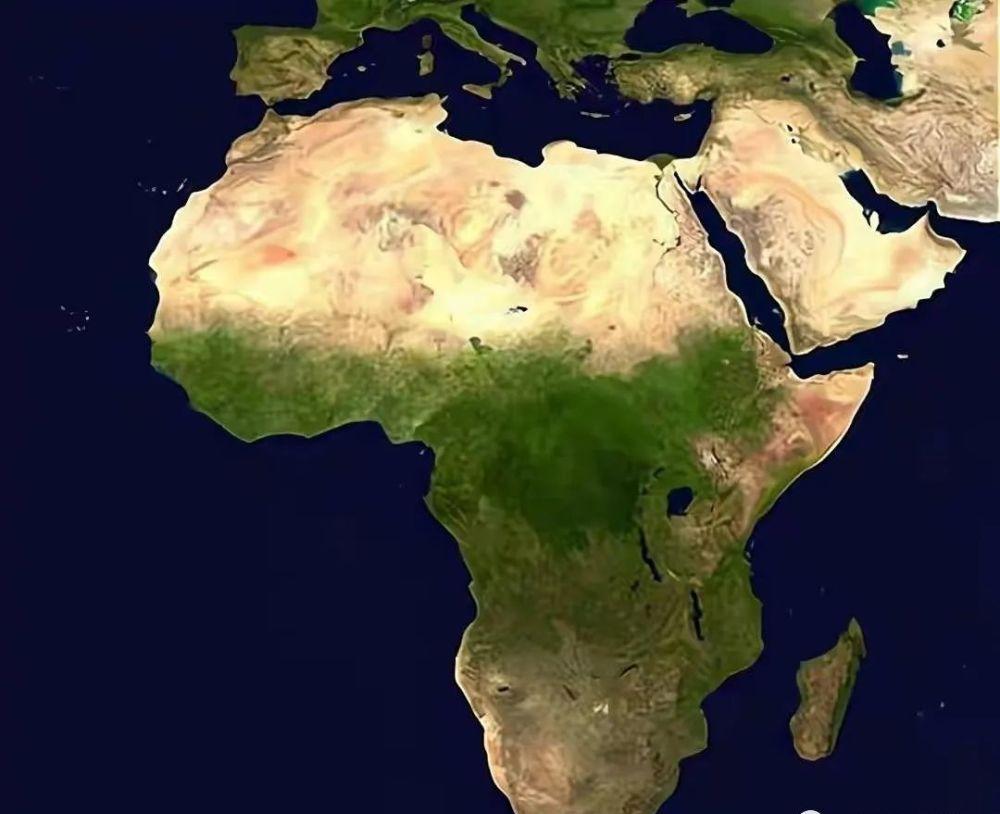At present, the global desert area has reached 30 million square kilometers, accounting for 20% of the total land area. The Sahara Desert is the largest desert in the world, this desert runs through northern Africa, 5600 kilometers from east to west, about 1600 kilometers wide from north to south, with a total area of more than 9 million square kilometers, accounting for about one-third of the total area of Africa, almost equivalent to the area of China.

The natural environment there is extremely harsh, dry and rainy, extremely detrimental to the survival of life, known as the "world's second largest desert", second only to Antarctica. Even now, ordinary people crossing the Sahara Desert, if not well prepared, have to experience nine deaths.
When large areas of land are in a state of extreme drought for a long time, lack of vegetation and water, after a long time, deserts, rock deserts, gravel deserts (Gobi) and other types of deserts will be formed. Sand in the desert is formed by soil desertification and rock weathering. That is to say, no matter how large the desert, the thickness of the sand layer is certainly limited.
The thickness of the sand layer of the desert is related to the time of its formation, the topography of the terrain, and the local wind direction and wind speed. The thickness of the sand layer is different in different deserts; even if it is the same desert, the thickness of the sand layer in different locations is different. Usually the edge of the desert is where the sand layer is thinnest. According to statistics, the average thickness of the global desert is about 3.5 meters.
So how thick is the sand layer of the Sahara Desert? What's underneath the sand?
To know how thick the sand layers of the desert are and what is under the sand, some people may think that this must be known by drilling and digging, but there is another way in addition to this method.
Electromagnetic waves have a certain ability to penetrate, and any substance has different electromagnetic wave reflection or radiation characteristics. This means that we can use electromagnetic waves to detect the bottom of the desert, which is more suitable for detecting the entire desert.
This technology, known as remote sensing technology, was born in the 1960s, first using satellites, aircraft and other detection systems to emit electromagnetic waves of a specific frequency to the desert underground, and then analyze the spectral characteristics of the reflected electromagnetic waves, and then study and process these data, and finally obtain information such as the thickness of the desert sand layer. The application of this technology is very extensive, such as the discovery of underground mineral resources, the measurement of the thickness of ice sheets, the mapping of seabed topography...
According to remote sensing data, the average thickness of the sand layers in the Sahara Desert is about 3.6 meters, while the thickest point reaches 320 meters.
In fact, the Sahara Desert is not all sand, its sand covered surface is mainly located in the north-central region, and the surface of most other areas is exposed rock, gravel, etc. (gravel refers to rock debris with an average particle size of more than 2 mm and less than 64 mm, and rock chips with a particle size greater than 0.074 mm and less than 2 mm are sandstone).
In addition to the presence of oil in the Sahara Desert, there are also many remnants of ancient rivers and lakes beneath the sand layers of the Sahara Desert. According to estimates by geologists, one of the giant lakes, at its peak, reached an area of 108,000 square kilometers and reached a depth of 247 meters.
These discoveries mean that a long time ago, the Sahara was not a desert, but a green paradise with abundant vegetation and water resources that nourished many flora and fauna.
As for why the area became desert, scientists believe it has something to do with plate movement. Between 7 million and 11 million years ago, the contraction of the Sea of Tethys (ancient Mediterranean) led to a significant weakening of summer winds in North Africa, eventually turning the ancient Sahara region into a desert.
In fact, whether it is a desert or an ocean, or other geomorphological features, gouging out water, sediment, etc., digging deep underground, the final encounter will be hard rock. If we can dig up all the sand in the Sahara Desert, the bare rock will be hard.
The earth is a rocky planet, in addition to the atmosphere and the hydrosphere, the earth can be divided into three major circles from the outside to the inside, the earth's crust, the mantle, the core of the earth, of which the part above the mantle asthenosphere and the entire crust belong to the lithosphere. The entire lithosphere is about 60 to 120 kilometers thicker, and the land area is thicker than the ocean, but this point is less than 2% of the earth's radius, which is similar to an egg shell for the earth.
Follow me, let's talk next time.
WeChat public account: scientific exploration of bacteria